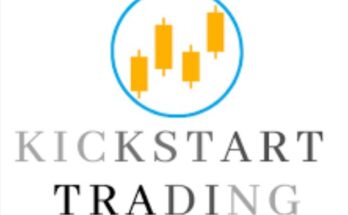Title: Introduction to Trading: Navigating the Financial Markets
Introduction:
Trading in financial markets has evolved from a niche activity to a globally accessible endeavor that attracts individuals and institutions alike. The allure of potential profits, the dynamic nature of markets, and the availability of advanced trading tools have made trading a popular pursuit. In this article, we will provide an introductory overview of trading, exploring its fundamental concepts, key markets, and the essential elements that aspiring traders need to understand.
- What is Trading? At its core, trading is the act of buying and selling financial instruments, such as stocks, bonds, currencies, commodities, and derivatives, with the aim of making a profit. Traders engage in the financial markets to capitalize on price movements, leveraging various strategies and tools to navigate the complex world of assets.
- Markets: Trading takes place across various financial markets, each offering unique opportunities and challenges:
- Stock Market: In the stock market, traders buy and sell shares of publicly traded companies. Stock exchanges, such as the New York Stock Exchange (NYSE) and NASDAQ, provide platforms for these transactions.
- Forex (Foreign Exchange) Market: The forex market is the largest and most liquid financial market globally. Traders in the forex market exchange currencies, aiming to profit from fluctuations in exchange rates.
- Commodity Market: Commodities, such as gold, oil, and agricultural products, are traded in commodity markets. Traders can participate in commodity futures contracts to speculate on future price movements.
- Bond Market: The bond market involves the buying and selling of debt securities issued by governments, municipalities, or corporations. Bond traders aim to benefit from interest rate movements and credit market dynamics.
- Derivatives Market: Derivatives, including options and futures contracts, allow traders to speculate on the future price movements of underlying assets without owning the assets themselves. Derivatives markets provide opportunities for risk management and speculation.
- Key Participants: Trading involves a diverse range of participants, each with distinct roles:
- Retail Traders: Individual traders who trade their personal accounts. They can engage in various markets and typically use online brokerage platforms for execution.
- Institutional Traders: Financial institutions, hedge funds, and other large entities engage in institutional trading. These participants often have significant resources and may employ complex strategies.
- Market Makers: Market makers facilitate trading by providing liquidity. They continuously quote buy and sell prices for assets and profit from the spread between these prices.
- Brokers: Brokers act as intermediaries between retail traders and the financial markets. They execute trades on behalf of clients and provide access to various markets.
- Regulators: Regulatory bodies, such as the Securities and Exchange Commission (SEC) in the United States, oversee financial markets to ensure fair and transparent trading practices.
- Trading Instruments: Different financial instruments cater to various trading preferences:
- Stocks: Ownership shares in publicly traded companies, representing a claim on a portion of the company’s assets and earnings.
- Forex Pairs: Currencies are traded in pairs (e.g., EUR/USD). Traders speculate on the exchange rate movements between two currencies.
- Commodities: Physical goods like gold, oil, and agricultural products are traded as commodities. Futures contracts allow traders to speculate on commodity prices.
- Bonds: Debt securities issued by governments or corporations. Bond traders aim to benefit from interest rate changes and credit conditions.
- Options: Derivative contracts that give traders the right (but not the obligation) to buy or sell an asset at a predetermined price within a specified time frame.
- Futures: Contracts that obligate traders to buy or sell an asset at a predetermined price and date in the future.
- Basic Trading Concepts:
- Long and Short Positions: Going long involves buying an asset with the expectation that its price will rise. Going short involves selling an asset with the anticipation that its price will fall.
- Leverage: Leveraging allows traders to control a larger position with a smaller amount of capital. While it magnifies potential profits, it also increases the risk of losses.
- Risk Management: A crucial aspect of trading involves managing risks to protect capital. Techniques include setting stop-loss orders, diversifying portfolios, and sizing positions appropriately.
- Market Orders and Limit Orders: Market orders are executed at the current market price, while limit orders are placed at a specified price. Limit orders are only executed when the market reaches the designated price.
- Online Trading Platforms: The advent of online trading platforms has democratized access to financial markets. Retail traders can execute trades, access real-time market data, and utilize analytical tools from the comfort of their homes through these platforms.
- Educational Resources: Aspiring traders benefit from a wealth of educational resources, including online courses, webinars, books, and forums. Understanding market dynamics, trading strategies, and risk management principles is essential for success.
- Continuous Learning: The financial markets are dynamic, influenced by economic events, geopolitical developments, and technological advancements. Successful traders recognize the importance of continuous learning to stay informed and adapt to changing market conditions.
Conclusion:
Trading is a multifaceted and dynamic activity that empowers individuals and institutions to participate in the global financial markets. Whether one is a novice retail trader or a seasoned institutional participant, understanding the basics of trading, market dynamics, and risk management is crucial. Aspiring traders embark on a journey of continuous learning, honing their skills and strategies to navigate the ever-evolving landscape of trading successfully.



